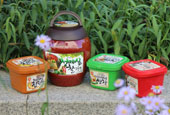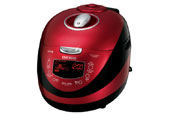When people talk about a "hidden champion," there is one company not to be missed. It is HJC, a firm that has been leading the global motorcycle helmet market. Its helmets are characterized by vibrant and colorful patterns and the HJC logo, and they have been enjoying huge popularity among motorcycle riders worldwide.
HJC has been producing motorcycle and safety helmets since its foundation in 1971. As a leading motorcycle helmet maker, it has captured a 15 percent share of the global market.
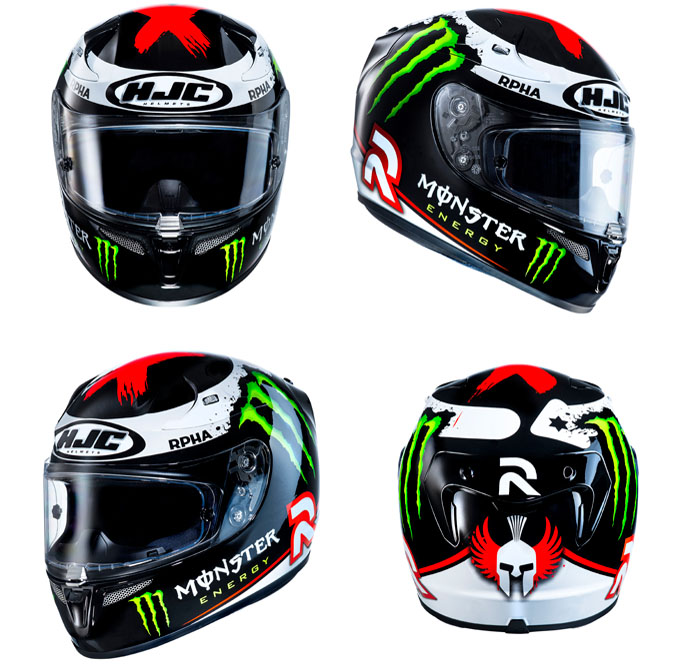
The HJC RPHA 10 helmet is HJC's lead product. The colors are those used by Spanish motorcycle racer Jorge Lorenzo. HJC is a leader in the U.S market and a runner-up in Europe, in terms of market share. It operates four factories in Korea, China and Vietnam. It produced 1.5 million helmets in 2013, with sales of KRW 80 billion.
The HJC RPHA 10 helmet series is the company's lead product. The full-face helmet is popular among motorcycle riders for its light weight, aerodynamic design and convenient features.
Many famous motorcycle racers wear HJC products. Ben Spies, the winner of the AMA Superbike Championship and the Superbike World Championship, and Jorge Lorenzo, the winner of the MotoGP competition, both once used or have been using HJC helmets.
HJC did not get to its lead position in the global motorcycle helmet market overnight. When it began, the company developed and commercialized helmets made of engineered plastic, which is much more durable and solid than ordinary plastic. Only then was it able to achieve No. 1 status in the global market.
Although it could have produced and exported helmets without its own logo, allowing importers to sell its products under their own brands, HJC refused to do so and stuck to its own name and logo.
When HJC entered the U.S. market for the first time in the 1980s, an American company placed an order worth USD 500,000 and wanted to sell its helmets under its own brand. HJC rejected the offer and proceeded to enter the U.S. market on its own.
"Most other motorcycle helmet producers gave up on developing plastic helmets because it was difficult to meet the necessary requirements. Even people at our company said we should give up on developing plastic helmets," said HJC Chairman Hong Whan-ki. "However, after a series of failures, we were able to develop helmets with new materials and have since become the world's No. 1 motorcycle helmet producer."
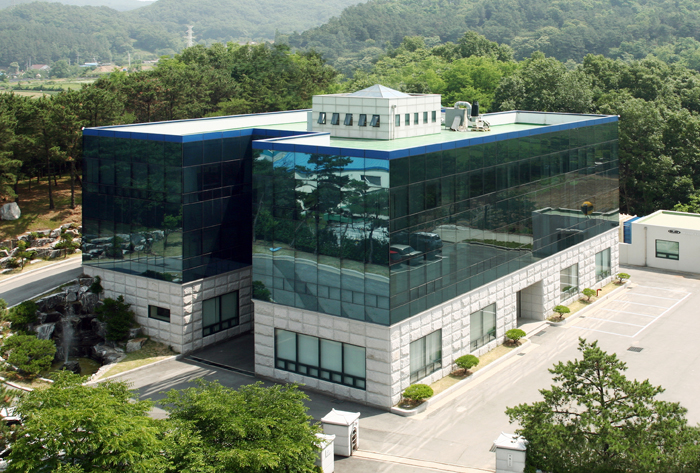
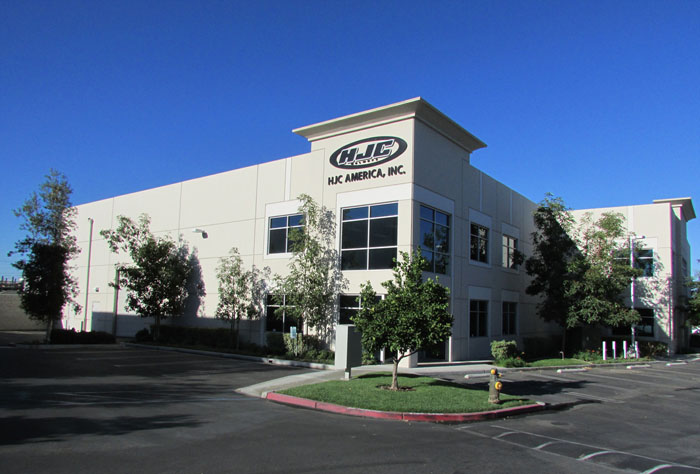
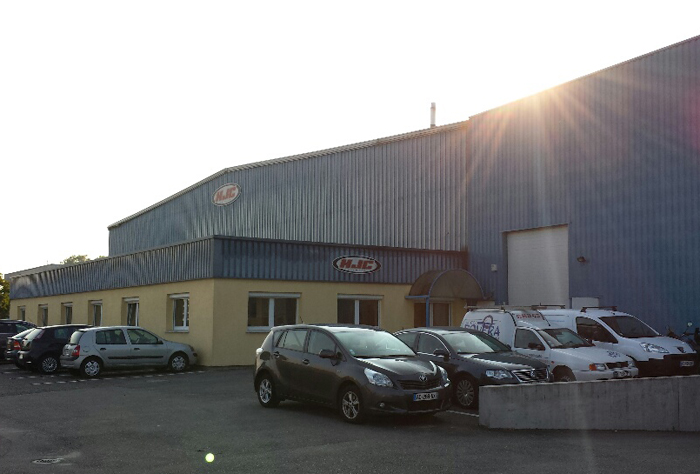
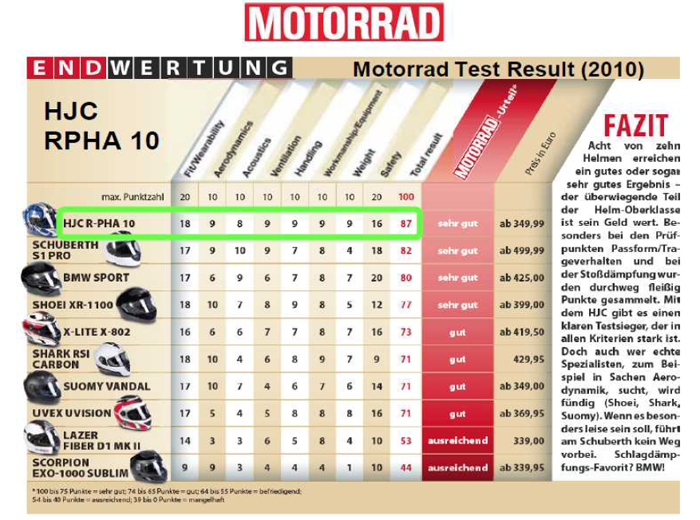
HJC continues to invest 10 percent of its sales into research and development. It has filed and registered over 60 patents across the world. Some 30 percent of the employees working at the Korean headquarters are involved in research and development, design or quality management. HJC is one of the few motorcycle helmet makers in the world that have a wind tunnel system in which the company tests many factors that arise when riding a motorcycle, including noise, airflow and the aerodynamic quality of helmets.
By Limb Jae-un
Korea.net Staff Writer
jun2@korea.kr

HJC has been producing motorcycle and safety helmets since its foundation in 1971. As a leading motorcycle helmet maker, it has captured a 15 percent share of the global market.

The HJC RPHA 10 helmet is HJC's lead product. The colors are those used by Spanish motorcycle racer Jorge Lorenzo.
The HJC RPHA 10 helmet is HJC's lead product. The colors are those used by Spanish motorcycle racer Jorge Lorenzo. HJC is a leader in the U.S market and a runner-up in Europe, in terms of market share. It operates four factories in Korea, China and Vietnam. It produced 1.5 million helmets in 2013, with sales of KRW 80 billion.
The HJC RPHA 10 helmet series is the company's lead product. The full-face helmet is popular among motorcycle riders for its light weight, aerodynamic design and convenient features.
Many famous motorcycle racers wear HJC products. Ben Spies, the winner of the AMA Superbike Championship and the Superbike World Championship, and Jorge Lorenzo, the winner of the MotoGP competition, both once used or have been using HJC helmets.
HJC did not get to its lead position in the global motorcycle helmet market overnight. When it began, the company developed and commercialized helmets made of engineered plastic, which is much more durable and solid than ordinary plastic. Only then was it able to achieve No. 1 status in the global market.
Although it could have produced and exported helmets without its own logo, allowing importers to sell its products under their own brands, HJC refused to do so and stuck to its own name and logo.
When HJC entered the U.S. market for the first time in the 1980s, an American company placed an order worth USD 500,000 and wanted to sell its helmets under its own brand. HJC rejected the offer and proceeded to enter the U.S. market on its own.
"Most other motorcycle helmet producers gave up on developing plastic helmets because it was difficult to meet the necessary requirements. Even people at our company said we should give up on developing plastic helmets," said HJC Chairman Hong Whan-ki. "However, after a series of failures, we were able to develop helmets with new materials and have since become the world's No. 1 motorcycle helmet producer."



(From top) The HJC research institute is in Yongin, Gyeonggi-do (Gyeonggi Province). HJC's U.S. headquarters are in the LA area. HJC's European headquarters are in France.

HJC's RPHA 10 model tops a motorcycle helmet test by Motorrad, a German motorcycle magazine.
HJC continues to invest 10 percent of its sales into research and development. It has filed and registered over 60 patents across the world. Some 30 percent of the employees working at the Korean headquarters are involved in research and development, design or quality management. HJC is one of the few motorcycle helmet makers in the world that have a wind tunnel system in which the company tests many factors that arise when riding a motorcycle, including noise, airflow and the aerodynamic quality of helmets.
By Limb Jae-un
Korea.net Staff Writer
jun2@korea.kr
